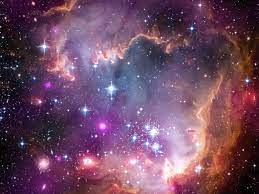Small Magellanic Cloud : Dwarf Galaxy

The world’s most powerful telescope, NASA’s James Webb telescope, has found a star formation in a dynamic cluster that lies within a nebula 200,000 light years away.
- As per the American space agency, the Small Magellanic Cloud (SMC) star-forming region NGC 346 is one of the most dynamic in nearby galaxies and is a dwarf galaxy.
- It is close to the Milky Way with lower metal concentrations.
- The Magellanic Clouds are irregular galaxies that share a gaseous envelope and lie about 22° apart in the sky near the south celestial pole.
- They are comprised of two irregular galaxies, the Large Magellanic Cloud (LMC) and the Small Magellanic Cloud (SMC), which orbit the Milky Way once every 1,500 million years and each other once every 900 million years.
- These companion galaxies were named for the Portuguese navigator Ferdinand Magellan, whose crew discovered them during the first voyage around the world (1519–22).
- Magellanic Clouds were formed at about the same time as the Milky Way Galaxy, approximately 13 billion years ago.
- They are presently captured in orbits around the Milky Way Galaxy and have experienced several tidal encounters with each other and with the Galaxy.
- They contain numerous young stars and star clusters, as well as some much older stars.
- The Magellanic Clouds are visible to the unaided eye in the Southern Hemisphere.




